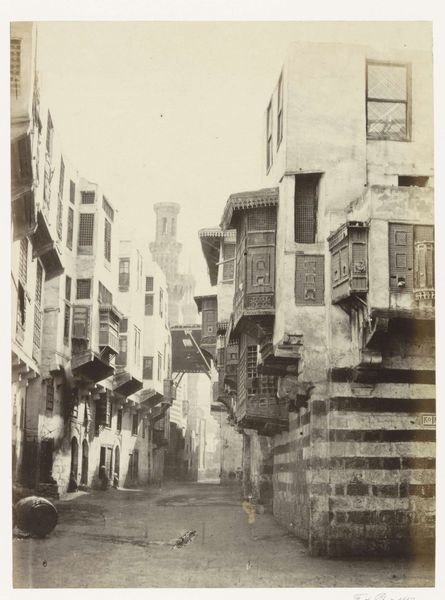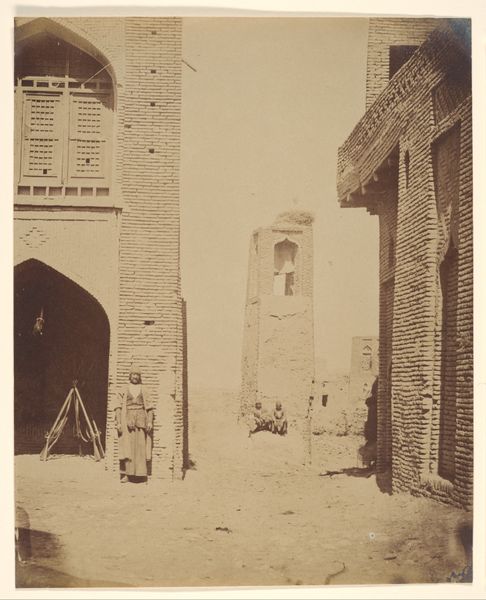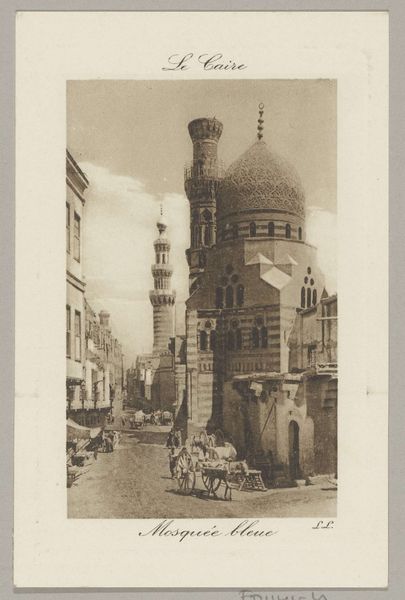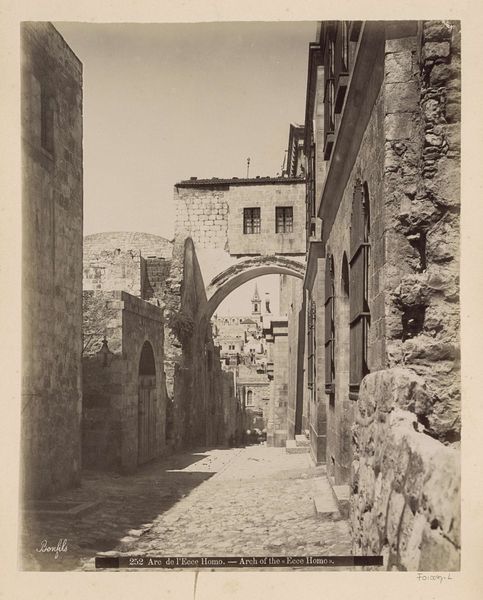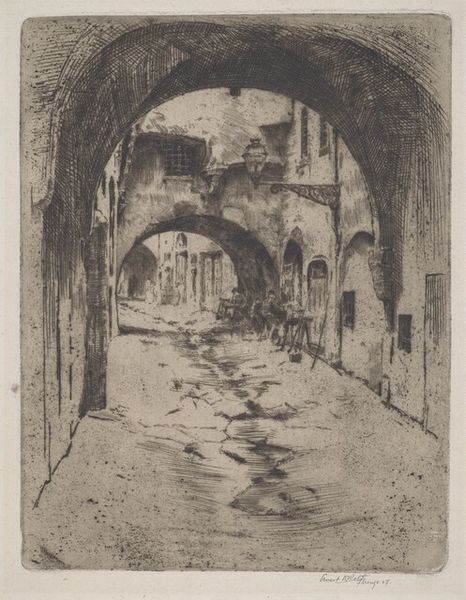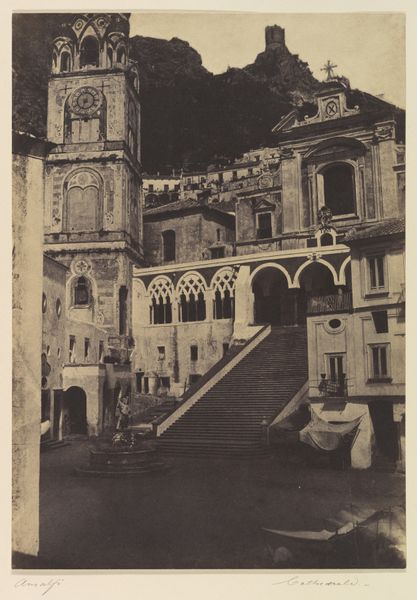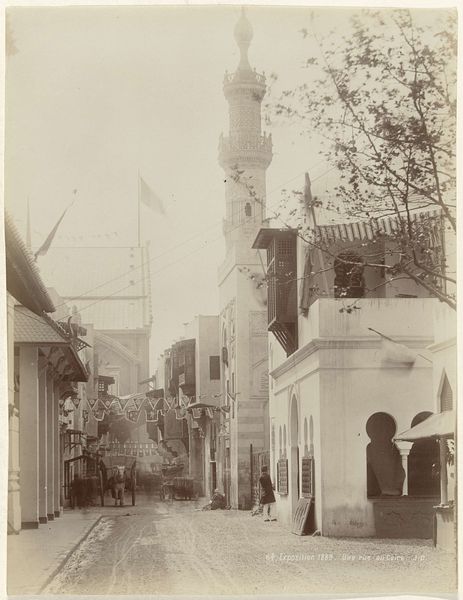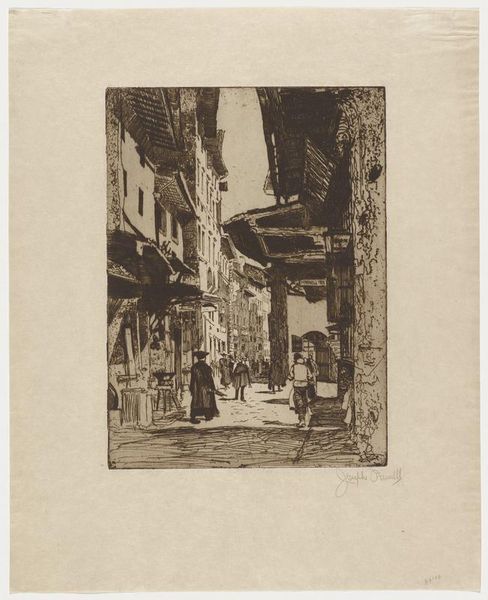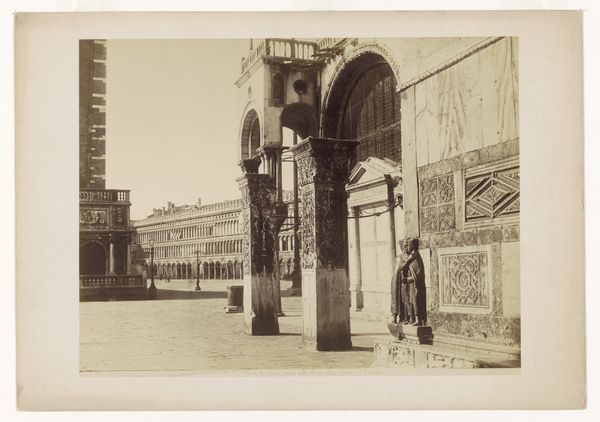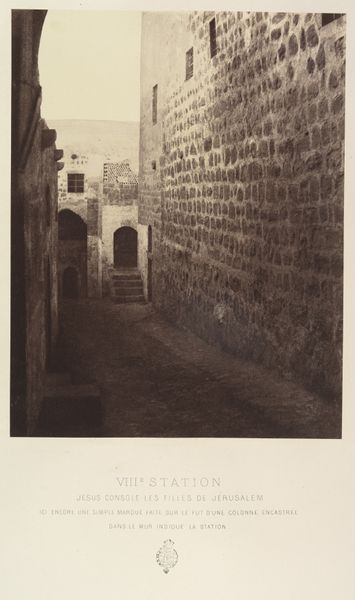
Dimensions: height 486 mm, width 386 mm
Copyright: Rijks Museum: Open Domain
This photograph, "Gezicht in Cairo," was captured by Francis Frith using photographic materials and processes common in the 19th century. The image’s tonality results from a chemical reaction, a light-sensitive emulsion on paper. Note how the intense sunlight of Cairo bleaches out the details, reducing the architectural complexity to a study in light and shadow. This aesthetic choice emphasizes form and texture, highlighting the weight and age of the buildings. Frith's work straddles the line between documentation and artistry. Photography in his era demanded both technical skill and an eye for composition. This view of Cairo, while seemingly straightforward, involved considerable labor—transporting equipment, preparing chemicals, and carefully timing the exposure. The resulting image isn't just a record, but a carefully constructed representation of a place, mediated by the photographer's perspective and the limitations of his materials. Considering Frith's process allows us to appreciate the photograph not only as a picture but as a crafted object, deeply embedded in the social and technological context of its time.
Comments
No comments
Be the first to comment and join the conversation on the ultimate creative platform.
